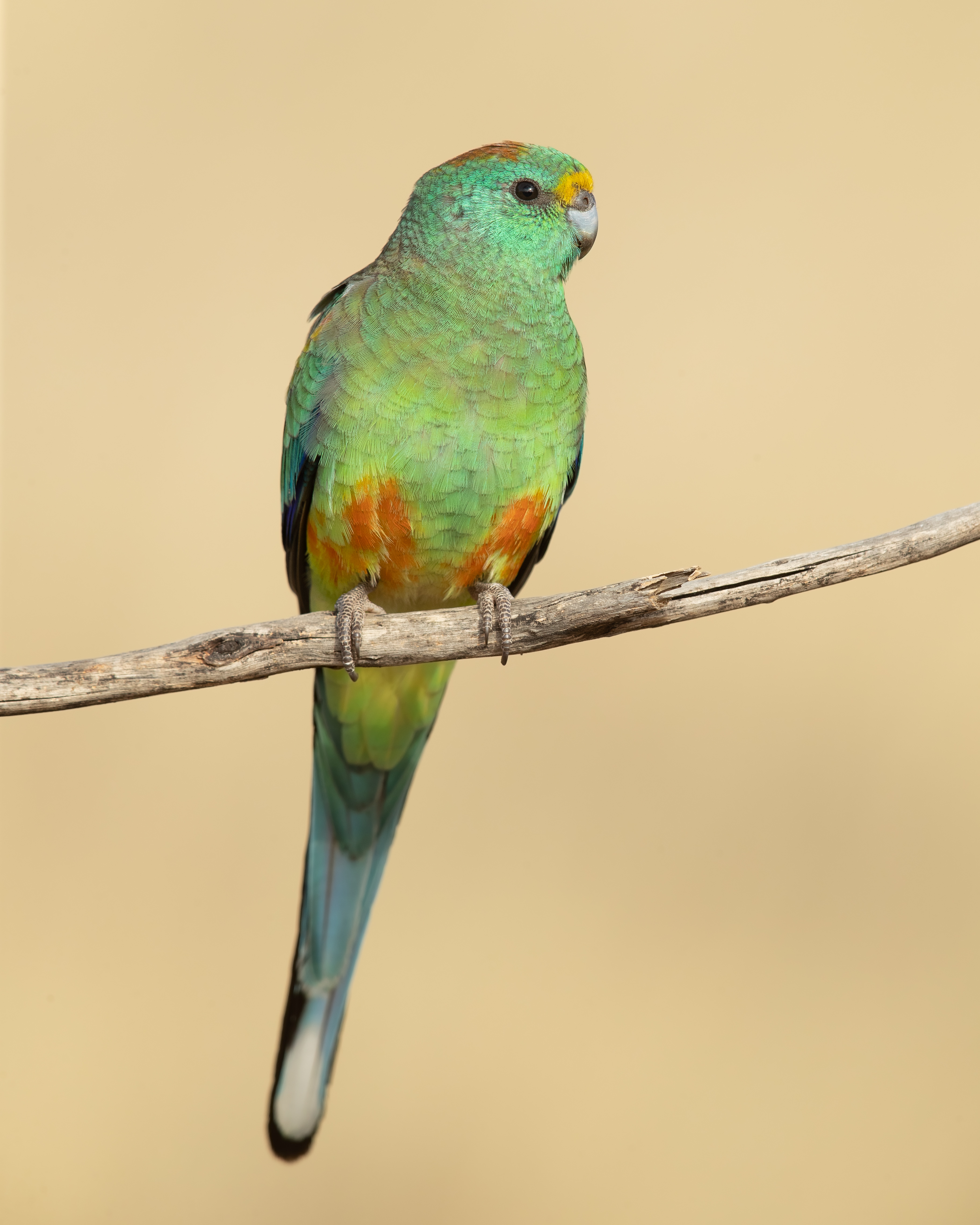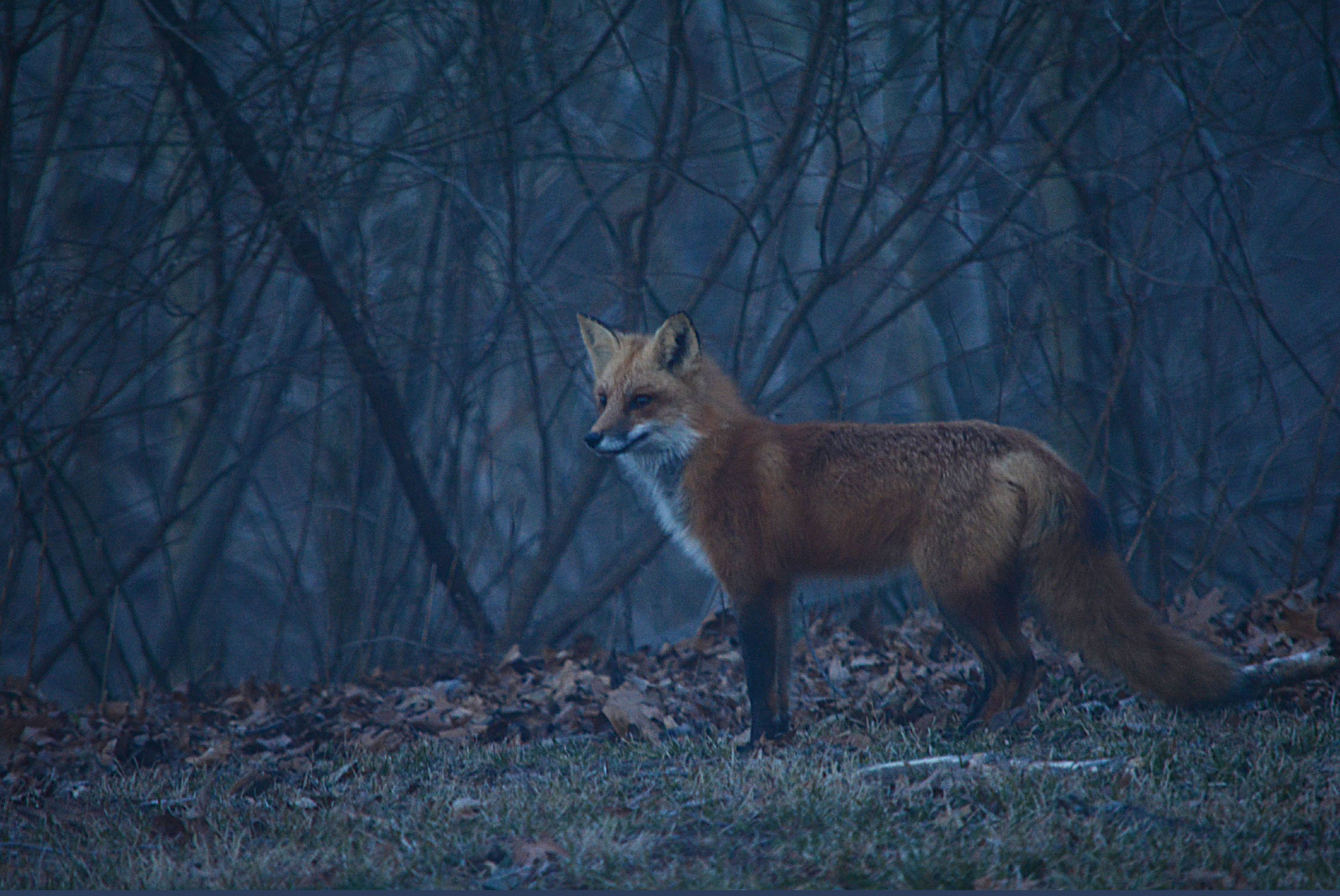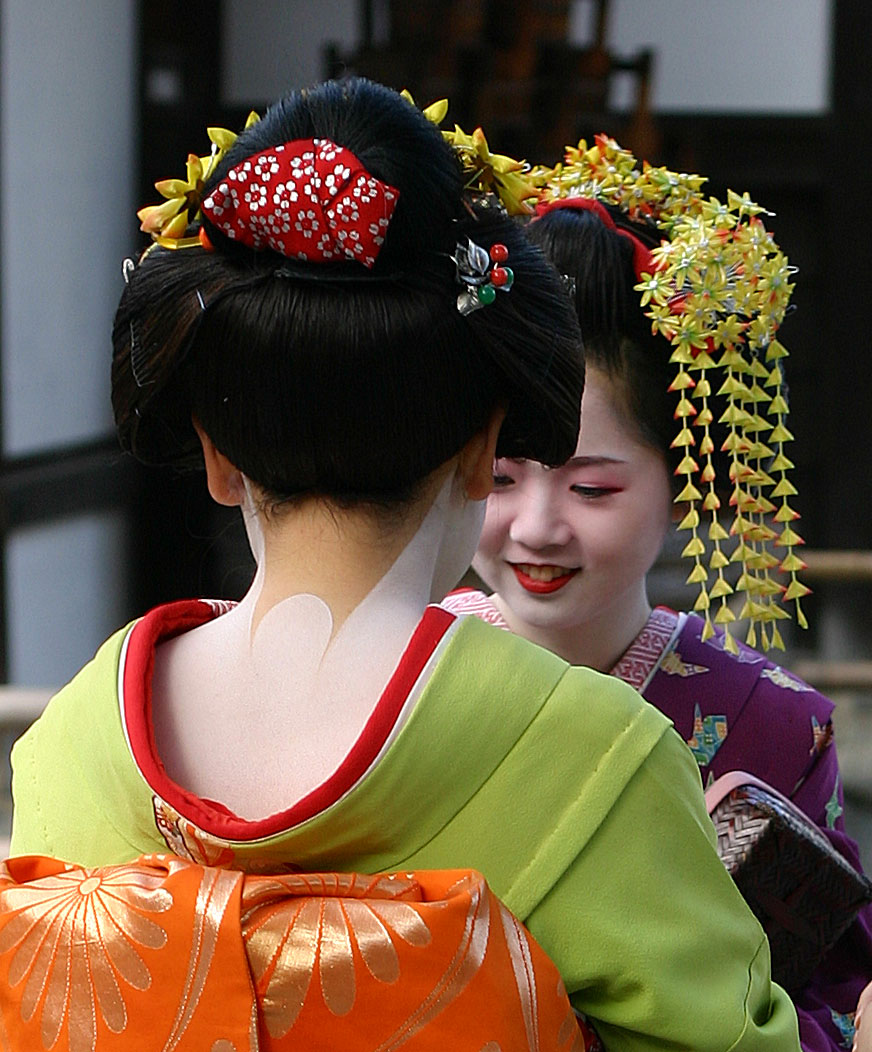|
Psephotus
The red-rumped parrot (''Psephotus haematonotus''), also known as the red-backed parrot or grass parrot, is a medium-sized broad-tailed parrot endemic to open woodland in south-eastern Australia, particularly in the Murray-Darling Basin. It is a highly sexually dimorphic species, with the adult female mainly being a greyish olive-green with lighter underparts and the adult male predominantly being a brightly coloured green and gold with various shades of blue on the wings. Only the adult male possesses the red rump that gives the species its common name. It is commonly found in open, grassy habitats, both in natural open woodland and in man-made environments such as paddocks, fields, parks and gardens. It has adapted well to rural and suburban areas and is commonly observed foraging on the ground for a variety of seeds. Taxonomy and naming The red-rumped parrot was described by John Gould in 1838 as ''Platycercus haematonotus'' from a specimen collected in New South Wales. He ... [...More Info...] [...Related Items...] OR: [Wikipedia] [Google] [Baidu] |
Mulga Parrot
The mulga parrot (''Psephotellus varius'') is endemic to arid scrublands and lightly timbered grasslands in the interior of southern Australia. The male mulga parrot is multicolored, from which the older common name of many-coloured parrot is derived. Taxonomy The mulga parrot was given its current scientific name of ''Psephotellus varius'' by American zoologist Austin Hobart Clark in 1910, after its name ''Psephotus multicolor'' was ruled invalid as the original combination (''Psittacus multicolor'') had been used for another species. Gregory Mathews proposed the name ''Psephotus dulciei'' in 1911 for the same reason, unaware of Clark's proposal, which was published earlier and hence had priority. Mathews described two additional subspecies of mulga parrot in 1912: ''P. varius rosinae'', from a specimen collected from Yorke Peninsula, noting that it had less red on the abdomen and its upper breast was a darker green, and ''P. varius exsul'' from a specimen from Mount Magnet in ... [...More Info...] [...Related Items...] OR: [Wikipedia] [Google] [Baidu] |
Broad-tailed Parrot
A broad-tailed parrot is any of about 35–40 species belonging to the tribe Platycercini. The members of the tribe are small to medium in size, and all are native to Australasia, Australia in particular, but also New Zealand, New Caledonia, and nearby islands. Species * Genus '' Prosopeia'' ** Crimson shining parrot, ''Prosopeia splendens'' ** Masked shining parrot, ''Prosopeia personata'' ** Maroon shining parrot, ''Prosopeia tabuensis'' * Genus ''Eunymphicus'' ** Horned parakeet, ''Eunymphicus cornutus'' ** Ouvea parakeet, ''Eunymphicus uvaeensis'' * Genus ''Cyanoramphus'' ** Black-fronted parakeet, ''Cyanoramphus zealandicus''† ** Society parakeet, ''Cyanoramphus ulietanus''† ** Lord Howe parakeet, ''Cyanoramphus subflavescens''† ** Antipodes parakeet, ''Cyanoramphus unicolor'' ** Red-crowned parakeet, ''Cyanoramphus novaezelandiae'' ** Macquarie parakeet, ''Cyanoramphus erythrotis''† ** Reischek's parakeet, ''Cyanoramphus hochstetteri'' ** Yellow-crowned parake ... [...More Info...] [...Related Items...] OR: [Wikipedia] [Google] [Baidu] |
Psephotellus
''Psephotellus'' is a genus of medium sized Australian parrots. Four species found across the country are recognised, one is presumed to have become extinct. Description All species show considerable sexual dimorphism. These species have traditionally been placed in the genus ''Psephotus'' along with the red-rumped parrot, but a molecular study analysing nuclear and mitochondrial DNA found that the red-rumped parrot was an early offshoot in a clade of several genera of broad-tailed parrot, with the other species nested deeply within. Taxonomy The genus was first proposed by Gregory Mathews Gregory Macalister Mathews CBE FRSE FZS FLS (10 September 1876 – 27 March 1949) was an Australian-born amateur ornithologist who spent most of his later life in England. Life He was born in Biamble in New South Wales the son of Robert H. M ... in 1913, nominating the paradise parrot ''Platycercus pulcherrimus'' Gould as the type and forming a new combination as ''Psephotellus ... [...More Info...] [...Related Items...] OR: [Wikipedia] [Google] [Baidu] |
Rosella
Rosellas are in a genus that consists of six species and nineteen subspecies. These colourful parrots from Australia are in the genus ''Platycercus''. ''Platycercus'' means "broad-tailed" or "flat-tailed", reflecting a feature common to the rosellas and other members of the broad-tailed parrot tribe. Their diet is mainly seeds and fruit. Taxonomy The genus was described by naturalist Nicholas Aylward Vigors in 1825; the name ''Platycercus'' derived from the Greek language, Greek ''platykerkos'' meaning "broad-" or "flat-tailed", from ''platys'' "broad, wide, level, flat" and ''kerkos'' "tail of a beast"., , . The relationships with other parrots have been unclear, with the Australian ringneck (genus ''Barnardius'') cited as a closest relative by some, and the genus ''Psephotus'' by others; the plumage of the western rosella seen as a link to the latter genus.Early European settlers encountered the eastern rosella at Rose Hill, New South Wales, now Parramatta, and so they cal ... [...More Info...] [...Related Items...] OR: [Wikipedia] [Google] [Baidu] |
Crepuscular Animal
In zoology, a crepuscular animal is one that is active primarily during the twilight period, being matutinal (active during dawn), vespertine/vespertinal (active during dusk), or both. This is distinguished from diurnal and nocturnal behavior, where an animal is active during the hours of daytime and of night, respectively. Some crepuscular animals may also be active by moonlight or during an overcast day. Matutinal animals are active only after dawn, and vespertine only before dusk. A number of factors affect the time of day an animal is active. Predators hunt when their prey is available, and prey try to avoid the times when their principal predators are at large. The temperature may be too high at midday or too low at night. Some creatures may adjust their activities depending on local competition. Etymology and usage The word ''crepuscular'' derives from the Latin '' crepusculum'' ("twilight"). Its sense accordingly differs from diurnal and nocturnal behavior, whic ... [...More Info...] [...Related Items...] OR: [Wikipedia] [Google] [Baidu] |
Road Verge
A road verge is a strip of groundcover consisting of grass or garden plants, and sometimes also shrubs and trees, located between a roadway and a sidewalk. Verges are known by dozens of other names such as grass strip, nature strip, curb strip, or park strip, the usage of which is often quite regional. Road verges are often considered public property, with maintenance usually being a municipal responsibility. Some local authorities, however, require abutting property owners to help maintain (e.g. watering, mowing, edging, trimming/ pruning and weeding) their respective verge areas, as well as clean the adjunct footpaths and gutters, as a form of community work. Benefits of having road verges include visual aesthetics, increased safety and comfort of sidewalk users, protection from spray from passing vehicles, and a space for benches, bus shelters, street lights, and other public amenities. Verges are also often part of sustainability for water conservation or ... [...More Info...] [...Related Items...] OR: [Wikipedia] [Google] [Baidu] |
Monogamy In Animals
Some animal species have a monogamous mating system, in which pairs bond to raise offspring. This is associated, usually implicitly, with sexual monogamy. Monogamous mating Monogamy is defined as a pair bond between two adult animals of the same species. This pair may cohabitate in an area or territory for some duration of time, and in some cases may copulate and reproduce with only each other. Monogamy may either be short-term, lasting one to a few seasons or long-term, lasting many seasons and in extreme cases, life-long. Monogamy can be partitioned into two categories, social monogamy and genetic monogamy which may occur together in some combination, or completely independently of one another.Ophir, Alexander G., Phelps, Steven M., Sorin, Anna Bess & O. Wolff, J. (2008)Social but not genetic monogamy is associated with greater breeding success in prairie voles/ref> As an example, in the cichlid species '' Variabilichromis moorii'', a monogamous pair will care for eggs and y ... [...More Info...] [...Related Items...] OR: [Wikipedia] [Google] [Baidu] |
IOC World Bird List
''Birds of the World: Recommended English Names'' is a paperback book written by Frank Gill and Minturn Wright on behalf of the International Ornithologists' Union. The book is an attempt to produce a standardized set of English names for all bird species and is the product of a project set in motion at the 1990 International Ornithological Congress. It is supplemented by a website, the IOC World Bird List, giving updates to the published material. An 11-page introduction deals with a number of issues which relate to the naming of birds. This is followed by a systematic list, from pages 12 to 211, and a 46-page index. The family sequence is that of the third edition of the '' Howard and Moore Complete Checklist of the Birds of the World''. The book's cover is illustrated with a photo of a helmet vanga, a bird endemic to Madagascar.Gill, Frank, and Minturn Wright, ''Birds of the World: Recommended English Names''; Princeton University Press, 2006. Background Since the pioneerin ... [...More Info...] [...Related Items...] OR: [Wikipedia] [Google] [Baidu] |
Nape
The nape is the back of the neck. In technical anatomical/medical terminology, the nape is also called the nucha (from the Medieval Latin rendering of the Arabic , ). The corresponding adjective is ''nuchal'', as in the term ''nuchal rigidity'' for neck stiffness. In many mammals, the nape bears a loose, non-sensitive area of skin, known as the scruff, by which a mother carries her young by her teeth, temporarily immobilizing it during transport. In the mating of cats, the male will grip the female's scruff with his teeth to help immobilize her during the act, a form of pinch-induced behavioral inhibition. Cultural connotations In traditional Japanese culture, the was one of the few areas of the body (other than face and hands) left uncovered by women's attire. The nape of a woman's neck held a strong attraction for many Japanese men (see ). In Egyptian and Lebanese culture, slapping the nape is considered a gesture of utter humiliation. References External links * * ... [...More Info...] [...Related Items...] OR: [Wikipedia] [Google] [Baidu] |
Moulting
In biology, moulting (British English), or molting (American English), also known as sloughing, shedding, or in many invertebrates, ecdysis, is a process by which an animal casts off parts of its body to serve some beneficial purpose, either at specific times of the year, or at specific points in its life cycle. In medieval times, it was also known as "mewing" (from the French verb "muer", to moult), a term that lives on in the name of Britain's Royal Mews where the King's hawks used to be kept during moulting time before becoming horse stables after Tudor times. Moulting can involve shedding the Epidermis (skin), epidermis (skin), pelage (hair, feathers, fur, wool), or other external layer. In some groups, other body parts may be shed, for example, the entire exoskeleton in arthropods, including the wings in some insects. Examples In birds In birds, moulting is the periodic replacement of feathers by shedding old feathers while producing new ones. Feathers are dead struct ... [...More Info...] [...Related Items...] OR: [Wikipedia] [Google] [Baidu] |







